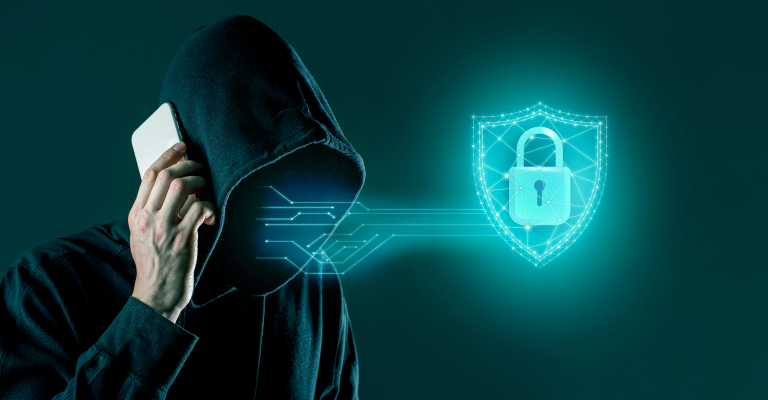Nowadays, verifying credentials (documents) or identity is very important. Advanced software and sophisticated tools have made it possible for fraudsters to create fake documents or identities. Identity fraud losses reached $43 billion in 2023 in the USA.
Even if physical/online credentials are genuine, it takes a lengthy manual process to verify their authenticity. In a nutshell, the current verification system is kind of slow, complex, and vulnerable to fraud. However, this can be solved with verifiable credentials (VCs). These are online versions of credentials that are created cryptographically and can be verified online instantly.
This eventually builds TRUST among all parties involved and that’s what we do at EveryCRED. Here, we will shed light on the need for verifiable credentials for better security and trust where the current verification system fails.
How Current Verification System Works and Problems
Before we talk about the application of verifiable credentials in verification systems, it is important to understand how we currently verify identities or credentials and what the problem is with them.
Right now, when you need to prove your identity or qualifications, you usually have to show physical or online documents like your driver’s license, passport, or utility bills. The person checking these documents manually has to verify that they are real and valid. If they don’t want to go through a manual verification process, they must trust the claim instantly.
This process is not only time-consuming but also has some major drawbacks:
- No Standard Rules: Different organizations have their own ways of verifying credentials, which can be confusing and inconsistent.
- Easy to Fake: Physical or normal online documents can be forged or altered. It becomes hard to spot fake identities.
- Slow and Inefficient: The manual process of credentials verification takes a lot of time and effort for everyone involved. A person needs to be physically present and wait for approval.
- Not Always Accessible: Physical documents can get lost, stolen, or damaged, making it tough to prove your identity when you need to.
- Privacy Concerns: Sharing sensitive personal info with multiple parties increases the risk of data breaches and identity theft.
- Lack of Control: Once you hand over your personal information, you have little say in how it is used and shared.
- Costly: Setting up and maintaining secure verification systems can be expensive for businesses, especially for smaller ones.
What are Verifiable Credentials?
Verifiable credentials are like digital versions of physical documents that prove your identity, qualifications, or other important details about you. They are issued by trusted authorities, like government agencies, schools, or employers, and can be easily verified by anyone with the right digital tools. Organizations or governments use platforms like EveryCRED to issue and verify such verifiable credentials.
Verifiable credentials are a key part of decentralized identity, which gives you more control over your personal information. Instead of your data being stored in centralized databases, you can keep your verifiable credentials in a digital wallet on your own device. Since it is controlled only by the owner, it is called decentralized.
In simple words, there are three parties involved here i.e., issuer, holder, and verifier. If an organization issues you a qualification certificate and you present it to a new employer company.
Organization => Issuer
You => Holder
New Employer => Verifier
You can find more about verifiable credentials in these two guides:
How Do Verifiable Credentials Solve the Problems with Current Identity Verification?
Verifiable credentials offer a bunch of benefits that tackle the issues with current verification systems:
- Standardization: Verifiable credentials follow open standards, such as those developed as per W3C standards, so they work across different systems and industries.
- Tamper-Proof: VCs use cryptography to make sure the data can’t be altered or faked without being detected.
- Efficiency: They can be instantly verified using automated digital processes, which saves time and effort compared to manual verification.
- Accessibility: Verifiable credentials are stored digitally, so they can be easily accessed from anywhere with an internet connection. They cannot be lost or stolen.
- Privacy Protection: VCs allow you to share only the specific information needed for a particular situation (only age, address, or name). You don’t have to reveal your entire identity, which shows all the details.
- User Control: With verifiable credentials, you have more control over your personal information. Only you decide when, how, and with whom to share your credentials.
- Cost-Effectiveness: Using verifiable credentials, organizations can reduce the costs associated with manual verification processes, fraud prevention, and data breaches.
- More Security: The use of cryptography and decentralized storage makes verifiable credentials more secure than traditional verification methods. It reduces the risk of identity theft, fraud, and data breach.
Use Cases: Verifiable Credentials Can Be Used in Different Industries
Verifiable credentials have tons of potential uses across various industries. Here are nine notable examples:
1. Supply Chain Management
Verifiable credentials can be used to track and verify the origin, authenticity, and quality of goods throughout the supply chain. This way, all parties, including customers, can know the source and origin of the raw material. It improves trust and transparency in the supply chain.
2. Education
Universities and colleges can issue degrees and certifications as verifiable credentials. This makes it easy for students to share their qualifications with employers and other institutions. Employers or other educational institutions can instantly verify the documents that have been presented.
3. Healthcare
Verifiable credentials can be used to securely share medical records, vaccination certificates, and other patient data. This improves patient care and reduces paperwork.
4. Employment
Employers can use verifiable credentials for background checks and skills verification. This makes instant verification, which reduces hiring costs and improves the quality of hires.
5. Finance
Banks and other financial institutions can use VCs for KYC processes and anti-money laundering checks. This way, they can speed up identity verification easily and reduce fraud.
6. Government Services
VCs can be used for secure and efficient access to government services, such as voting, tax filing, and benefits distribution. It can also be used for contracts between public sectors and government contractors.
7. Travel
Airlines, hotels, and border control agencies can use VCs for secure and contactless identity verification. This reduces waiting time for identity verification and improves the travel experience.
8. E-commerce
Online retailers can use verifiable credentials for secure and seamless customer authentication, reducing the risk of account takeovers and fraudulent transactions.
Check Use Cases of VCs: 14 Real-World Verifiable Credentials Use Cases & Applications
How Do Verifiable Credentials Actually Work?
There are a few steps of creation, issuance, and verification of VCs that show how they actually work.
Here’s how verification credentials work:
- Creation: The issuer creates a digital credential with specific information and details, such as certificates, degrees, ID cards, etc. The credential is then cryptographically signed using the issuer’s private key.
- Issuance: The issuer sends this verifiable credential to the holders, who store it in their digital wallet. The wallet can be a mobile app or a web-based platform that allows the holders to manage and share their verifiable credentials.
- Presentation: When the holder needs to prove their identity or qualifications to a verifier, they select the appropriate credential from their wallet and generate a verifiable presentation. The presentation contains only the specific claims required for the transaction, along with cryptographic proof that the claims are valid and haven’t been tampered with.
- Verification: The verifier receives the verifiable credentials and uses the issuer’s public DID (Decentralized Identifier) to verify if the credential is authentic. The verifier can also check if the credential has been revoked by the issuer.
Verifiable credentials can be converted into QR codes or links for easy sharing and verification. The holder can send the link or QR code to the verifier, and the latter can verify it instantly on a web app or mobile app.
Final Thoughts
There are lots of limitations to current verification systems, and in the future, it can be risky if we don’t adopt new solutions like verifiable credentials. VCs are created using blockchain technology, so they are decentralized, secure, and easy to share and verify.
VCs can help businesses to make the verification process smooth and increase security. EveryCRED offers verifiable credentialing solutions to various businesses across multiple industries. Our team of experts can help you design and implement a customized verifiable credentials solution according to your use cases and needs.
Contact us to understand how this simple and secure solution can be useful for your business.

 3rd September, 2024
3rd September, 2024 



